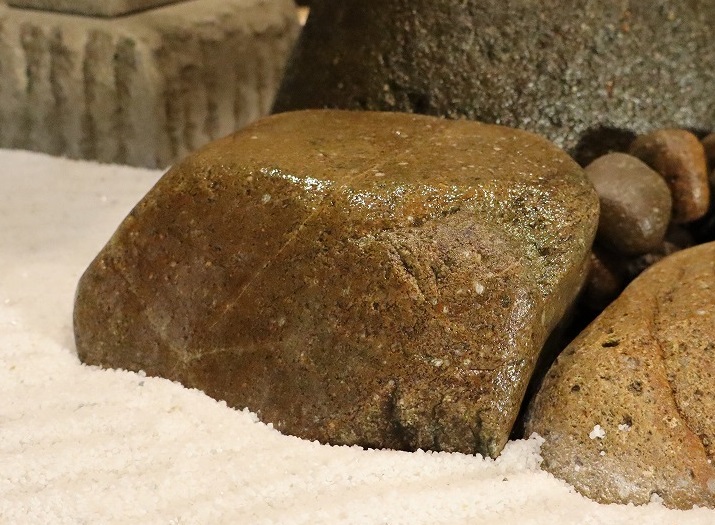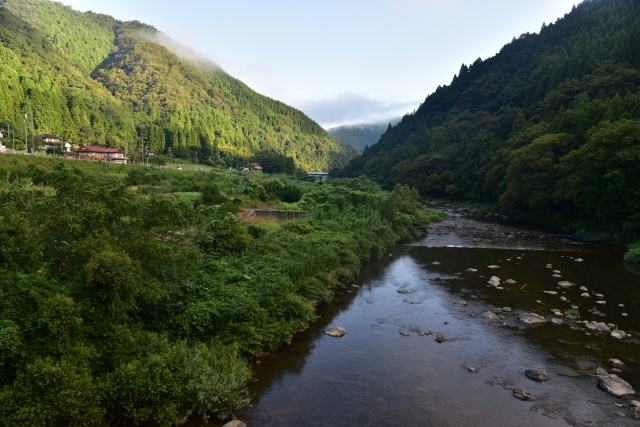Divine garden stones

In Japanese gardens, garden stones are set up to look like mountains or waterfalls. The texture and color of the stone skin, as well as the shape of the stone from the front, are carefully considered for the landscape stones used in Raku-teien. The stones are placed in such a way that they look calm and serene in the garden. At Raku-teien, the bottom of each garden stone is cut to maximize its characteristics. Therefore, anyone can simply place the garden stones and make them tower in a splendid and complete state. If there are two or more garden stones, it is also important that the garden stones balance each other. The entire garden should be united by the unified coloring and the quality of the stones. Harmony is more important than the beauty of a single garden stone. Therefore, a Japanese garden can tell a story as a whole.
The river stones in RAKUTEI are from the river called Hii River, a first-class river that flows through the Izumo region of Shimane Prefecture. The riber called Hii River is a first-class river with a basin area of approximately 2,550 square kilometers and a length of 153 kilometers, originating in Mount Sentuuzan in the Chugoku Mountains and flowing north into Lake Shinji. The upper reaches of the river are famous as the stage of Susano-no-mikoto’s eight-forked serpent slaying, which is well known in Japanese mythology, and is described as “Hinokawa” in the Kojiki and “Izumo Okawa” in the Izumokokufudoki. At that time, the river flowed westward through the Izumo Plain, but during the Edo period (1603-1867), the course of the river was changed to flow eastward as it does today. The river bottom is higher than the surrounding plains due to the “iron sink” used to extract iron sand for Tatara iron manufacturing upstream.
The river stones of the riber called Hii River, which is steeped in mythological legends, have a presence of both divine beauty and charm.


